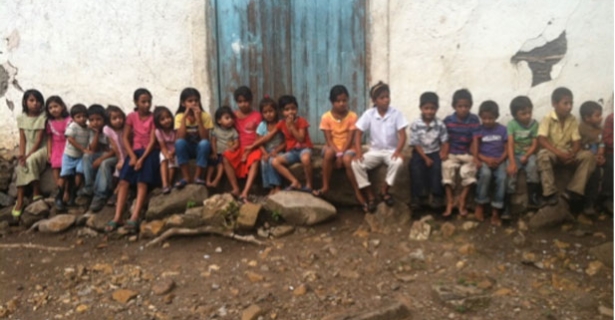Tom Chalmers, a senior (A14) majoring in International Relations, is a member of BUILD: Nicaragua.
For the past several weeks, Elayne Stetcher and I have been busy working for AVODEC, an NGO in Jinotega, Nicaragua that has implemented a number of successful agricultural and health-related development projects throughout the area. While Elayne has been occupied with AVODEC’s health and nutrition programs both in and out of Jinotega, I have been contributing to their projects in agricultural development and microfinance, a process that is extremely interesting but at times quite challenging. This week, we took a break from our respective projects to brainstorm and share our perspectives with AVODEC’s directors and associate groups regarding the planning and communication of project models. AVODEC’s unique structure makes this process makes this process all the more important. Through its interactions and relationships with a wide number of stakeholders, the organization functions in a way we have not encountered before.
Operating from central office in Jinotega, AVODEC organizes and facilitates committees of “associates” and volunteers across almost every municipality in the Jinotega department. Occasionally numbering into the hundreds, members of each group maintain their presence in the organization by dedicating themselves to collectively designing and carrying out local development projects. Each group elects delegates who oversee action on a community level and maintain constant contact with AVODEC, who provides funding, planning, and large scale coordination for each community development project. Beginning AVODEC’s first round of community organization in 1997, this web of volunteers and associates has stretched into the thousands, and is the primary means by which communities communicate their needs, coordinate development plans with outside sources of support, and ultimately receive the funding and resources necessary to implement the projects themselves. Out of this structure, AVODEC’s central office has designed many different micro-credit, agricultural development, and health infrastructure construction projects. Every three months, elected delegates from each associate group meet together to discuss project progress, resource use, and general planning. AVODEC’s core staff facilitate these meetings, and the information that flows through them ends up determining the course of development in many of the participating communities.
Elayne and I prepared a presentation that explained the use of logic models as a means of planning, communicating, and evaluating the structure of a project before, during, and after its implementation. Logic models, also called logframes, are a type of planning tool that visually arranges and rearranges the disparate components of a project to depict the relationships between these components in ways that planners may have not considered before. To demonstrate this, Elayne and I created a number of models based on two main programs we had observed while at AVODEC. Thinking we would be sharing these with just our supervisors and AVODEC’s directors, we found out moments before the presentation that we would be speaking also to the entire group of delegates, who were meeting to discuss the beginning of several new health projects. Despite our initial surprise, the presentation went very well. The delegates responded enthusiastically to the models and their use as a means of planning evaluation periods in projects, and our talk prompted a long discussion over the structure of the programs we had depicted. AVODEC’s directors likewise discussed with us the prospect of re-working and re-publishing their project plans to fit a standard format that could be easily communicated within and outside the organization.
The meeting was thus a success, in that it prompted lengthy discussions and brainstorming sessions on the part of the organizations members. When I first started working here, I did not anticipate assisting them greatly with monitoring and evaluation as I did not think myself qualified to give advice on measuring specific project indicators. As such, we designed the presentation as a means of showing them our way of organizing and envisioning the process, with the hopes that it might give them a useful outside perspective. Our focus on developing a communicable project model turned out to be exactly what AVODEC was looking for. Because delegates are constantly working on the ground and in the field, it is quite difficult for them to quickly transfer and exchange information on projects, and even more difficult to coordinate the brainstorming of larger project ideas between communities. I made it clear to them that I am an undergrad who is by no means an expert in monitoring and evaluation, but by working alongside them in the process and providing them with credible resources and information, I’m hoping that we can add useful tools to their rapidly changing system of internal evaluation.

